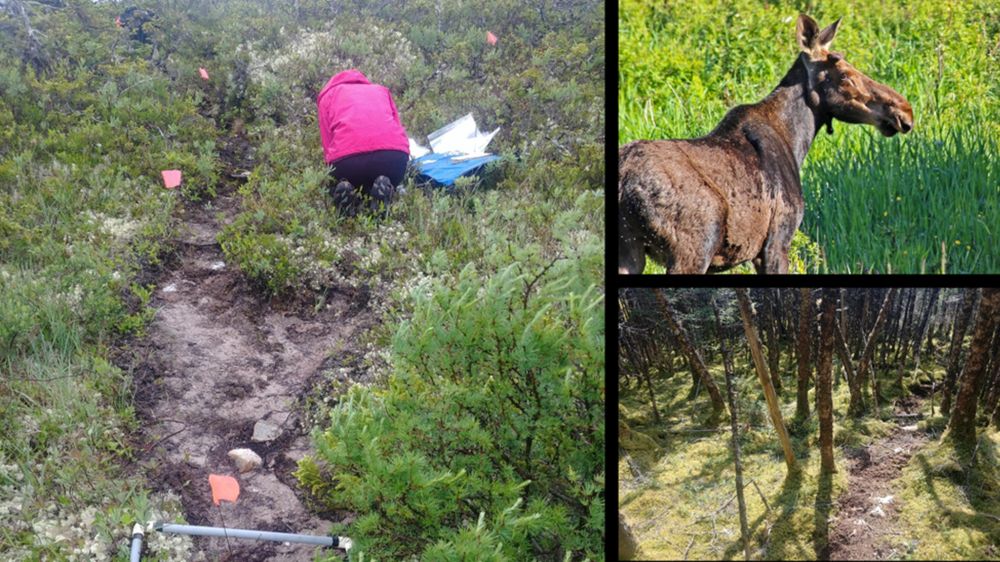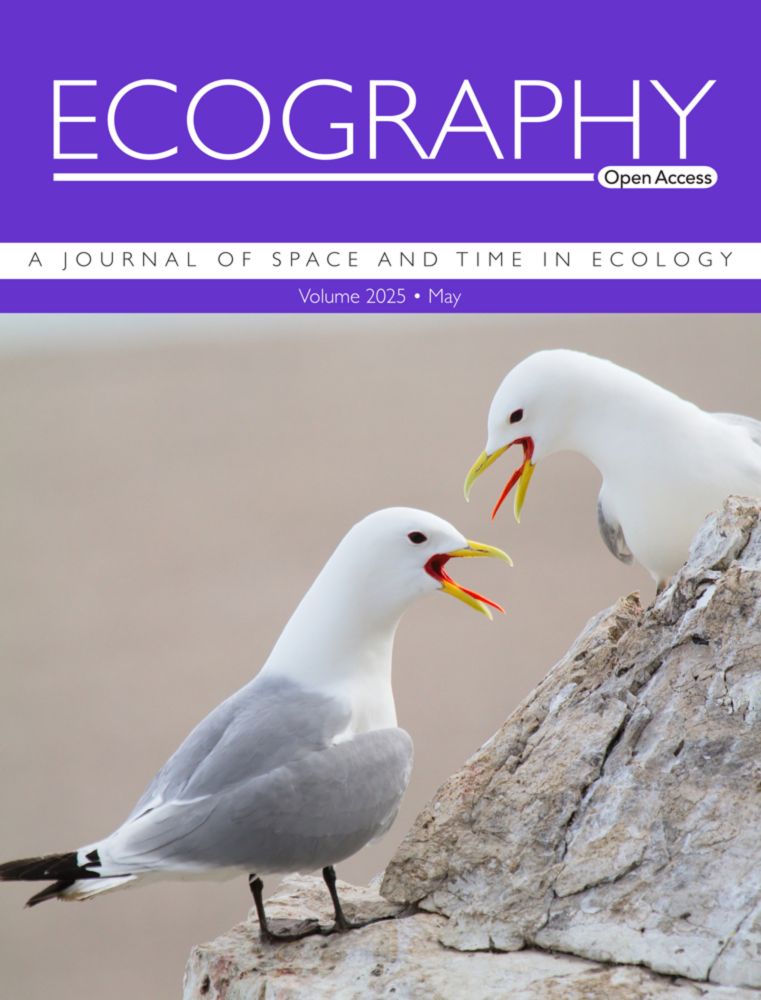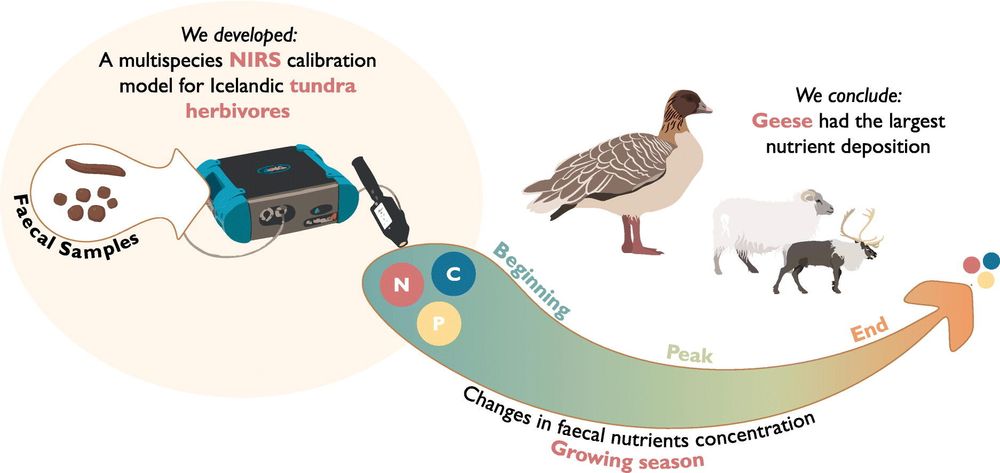
zoogeochemistry | herbivores | soil | animal movement | aboveground-belowground linkages | theory | field work
https://adameyer.wordpress.com
buff.ly/2Rxzl5W
🧪🌍

We know herbivores shape ecosystems through diet. But what about trampling? We disentangle how moose trampling affects soil environment, microbes, and N cycling in forest vs. heath ecosystems.
Come for the moose trails, stay for the non-trophic animal-ecosystem SEMs🤘
The wipeout of the largest mammals is a global phenomenon that we see across many regions.

The wipeout of the largest mammals is a global phenomenon that we see across many regions.
buff.ly/vl4Ia5W
🧪🌍

buff.ly/vl4Ia5W
🧪🌍
buff.ly/Dn1oyug
🧪🌍

buff.ly/Dn1oyug
🧪🌍


I stumbled across her, and scrambled to get a few crappy photos .... but then realized that she had a burrow, perhaps a better photo op was possible ??
here she is at her burrow entrance.

I stumbled across her, and scrambled to get a few crappy photos .... but then realized that she had a burrow, perhaps a better photo op was possible ??
here she is at her burrow entrance.
Rewilding relationships: Principles for forging relationships in social-ecological systems
Open access link: link.springer.com/article/10.1...

"I appreciated the plain language summary."
Wow!! 🏅
Here it is, glowingly endorsed by Linton Meyer, P. Eng.
fesummaries.wordpress.com/2025/07/17/s...

"I appreciated the plain language summary."
Wow!! 🏅
Here it is, glowingly endorsed by Linton Meyer, P. Eng.
fesummaries.wordpress.com/2025/07/17/s...
We know herbivores shape ecosystems through diet. But what about trampling? We disentangle how moose trampling affects soil environment, microbes, and N cycling in forest vs. heath ecosystems.
Come for the moose trails, stay for the non-trophic animal-ecosystem SEMs🤘
buff.ly/2Rxzl5W
🧪🌍

We know herbivores shape ecosystems through diet. But what about trampling? We disentangle how moose trampling affects soil environment, microbes, and N cycling in forest vs. heath ecosystems.
Come for the moose trails, stay for the non-trophic animal-ecosystem SEMs🤘
Thanks @aibsbiology.bsky.social for hosting @gadammeyer.bsky.social and I to chat about our new paper in BioScience! We talk about narratives in science and provide tools for creative storytelling in ecology and conservation. Have a listen!

Thanks @aibsbiology.bsky.social for hosting @gadammeyer.bsky.social and I to chat about our new paper in BioScience! We talk about narratives in science and provide tools for creative storytelling in ecology and conservation. Have a listen!

www.pnas.org/doi/10.1073/...

www.pnas.org/doi/10.1073/...
But what about all of them—together?
Our new framework predicts how animals of all shapes and sizes act within their communities to influence elemental distribution on landscapes.
w/ Janey Lienau @ecography.bsky.social
doi.org/10.1002/ecog...

But what about all of them—together?
Our new framework predicts how animals of all shapes and sizes act within their communities to influence elemental distribution on landscapes.
w/ Janey Lienau @ecography.bsky.social
doi.org/10.1002/ecog...
Such a cool experience to get to contribute to this effort! Thanks @icbarrio.bsky.social for fearlessly leading.
Our horizon scan highlights priority areas for Arctic herbivory management and research. Wonderfully led (as always) by @icbarrio.bsky.social and in collaboration with >70 interdisciplinary authors.
cdnsciencepub.com/doi/abs/10.1...
Such a cool experience to get to contribute to this effort! Thanks @icbarrio.bsky.social for fearlessly leading.
We developed the first multispecies NIRS-based open-source model to quantify nitrogen, phosphorus & carbon in faeces of tundra herbivores in Iceland (geese, reindeer, sheep).
doi.org/10.1016/j.sc...
🧵 (1/4)

We developed the first multispecies NIRS-based open-source model to quantify nitrogen, phosphorus & carbon in faeces of tundra herbivores in Iceland (geese, reindeer, sheep).
doi.org/10.1016/j.sc...
🧵 (1/4)
Looking beyond Popper: How Philosophy can be relevant to ecology. @oikosjournal.bsky.social
A fantastic collaborative effort between ecologists and philosophers of science.
#philosophy #ecology
nsojournals.onlinelibrary.wiley.com/doi/10.1111/...

All walking vertebrates 🦃🐘🐢 trample on plants🌱 and soil🪱🐜🦠. How does this non-trophic interaction impact terrestrial N cycling? It's context-dependent 🙄 but we show how 😃 with a new ecosystem model.
Blog: t.co/04dE1mrCve
Article: doi.org/10.1111/1365...

All walking vertebrates 🦃🐘🐢 trample on plants🌱 and soil🪱🐜🦠. How does this non-trophic interaction impact terrestrial N cycling? It's context-dependent 🙄 but we show how 😃 with a new ecosystem model.
Blog: t.co/04dE1mrCve
Article: doi.org/10.1111/1365...

